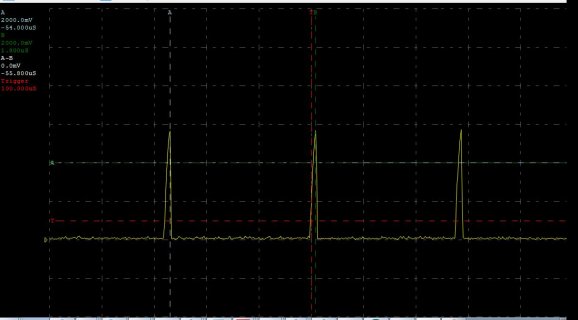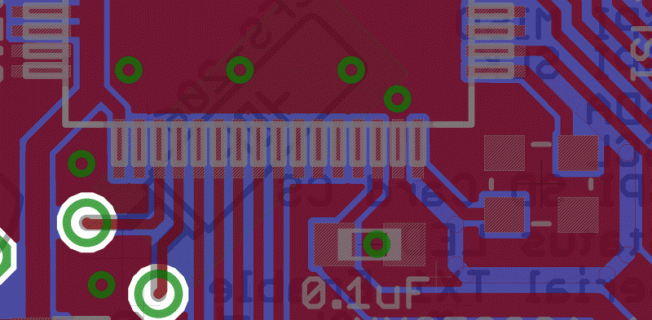I'm trying to bring up my first board design using pre-programmed MINI54 chips, and so far I'm not having much luck. I've attached a schematic of the connections between the MINI54ZAN and the MK20256VLH7 annotated with the DC voltages I'm measuring.
I added a 10K pullup from PROG to VDD, and PROG was pulled high, so the 0.14V shown in the annotation is from a floating pin. Based on the Teensy schematic, I would think P5.2 (pin 13) of the MINI54 would have to have a pullup enabled. The fact that it doesn't has me worried. I also added a pullup to RESET_B and confirmed that it is getting actively pulled low.
I'm wondering if something specific needs to be done with the MINI54 /RESET pin (pin 2) during initial bringup. I see now that there is a test point on the Teensy board. Is there a MINI54 bringup sequence I need to follow? I'd welcome another set of eyes.
I added a 10K pullup from PROG to VDD, and PROG was pulled high, so the 0.14V shown in the annotation is from a floating pin. Based on the Teensy schematic, I would think P5.2 (pin 13) of the MINI54 would have to have a pullup enabled. The fact that it doesn't has me worried. I also added a pullup to RESET_B and confirmed that it is getting actively pulled low.
I'm wondering if something specific needs to be done with the MINI54 /RESET pin (pin 2) during initial bringup. I see now that there is a test point on the Teensy board. Is there a MINI54 bringup sequence I need to follow? I'd welcome another set of eyes.



